Danilo Petrucci: Body fat, braking, overtaking and Toprak - Exclusive
Prior to Petrucci only Makoto Tamada, Troy Bayliss, Nicky Hayden, Ben Spies and Cal Crutchlow had moved to MotoGP straight from Superbike racing and gone on to stand on the top step of the podium.
Petrucci, runner-up in the 2011 FIM Superstock series before joining the premier-class, eventually did it twice, an emotional home win at Mugello 2019 being followed by the wet French victory, also in Factory Ducati colours.
Reigning world champion Toprak Razgatlioglu is the next big hope for an SBK-to-MotoGP winner, the Turkish star recently testing an M1 even though he won’t now have a chance of a MotoGP race seat until 2024.
“I think that Toprak shows incredible skills, he is absolutely a beast on braking!” said Petrucci, during an exclusive interview with Crash.net.
“I don’t know if in MotoGP he can brake as hard as he is doing now in World Superbike, but it's really a pleasure to see him racing and I think he can do well in MotoGP.
“It depends on which bike he is going to ride, but he is an incredible talent.
“For sure, he's using all his skills and all the potential that his bike has in World Superbike at the moment.
“Bautista, Toprak and Rea are three incredible talents. The Superbike championship is great to watch this year and I'm curious to see Toprak in MotoGP. I think he will be fast.”
MotoGP favours corner speed, acceleration
Razgatlioglu is famous for his extravagant hard-braking ‘stoppie’ style. But Petrucci, whose biggest strength was also on the brakes, warned that the character of the latest Michelin tyres rewards corner speed in MotoGP.
“You cannot brake as hard as we did in the past [in MotoGP], because the tyres are so sensitive,” Petrucci explained. “My difficulties began at the beginning of 2020, when the [revised] rear tyre didn’t help me to stop the bike. So I got worse on braking, which was my strongest point.
“You can see clearly that under braking we just had a little bit of a stoppie. But if you compare with photos of some years ago, the bikes were braking with the rear tyre high in the air all the way to the corner.
“Now you don't see this anymore because the stopping power [of the tyres] is reduced to have more corner speed. So you cannot make a big difference on braking, you can make more difference in the corner speed and acceleration.
“I started to struggle with this. I was so strong in 2017-18-19 when the construction of the rear tyre was so hard and we always chose the softest compound and tried to manage the race.
“Dovi was really really good at managing the tyre during that period, to be fast in the last ten laps.
“At the same time, Pedrosa was really in trouble, because such a strong tyre construction didn't help him with his light weight. But maybe it was helping me, because I remember so many times I was the fastest in FP3, in the cool morning conditions, because I was able to push the tyre.
“Since 2020, this was not possible for me anymore. But if you see Dani at the Red Bull Ring last year for example, he was faster than all the other KTMs in FP3!”
‘Wings? In the slipstream you don't have the ‘air’ to stop you’
Another new dimension for Razgatlioglu to contend with in MotoGP would be the advanced level of aerodynamics, increasingly blamed for hampering overtaking.
“In MotoGP now it is really difficult to overtake because the bikes are so fast on the straight and so precise with the aerodynamics,” Petrucci said.
“It's especially difficult to make overtakes because the aerodynamics don't help you when you are in the slipstream; you don't feel the advantage, instead you feel more the disadvantage under braking.
“You need to be out of the line to try an overtake, because if you brake behind another rider you just don't have the ‘air’ to stop you.
“And all these small things make qualifying much more important, you have to start in a good position and then it’s a matter of having the best tyre possible for the last 10 laps.
“But to do this you can’t stress the tyres by making overtakes, trying to brake harder or pushing more on the rear tyre.
“Every year is much more difficult in this respect.”
‘If you are short and light, you have an advantage in MotoGP’
Aside from their hard braking styles, another similarity between Petrucci and Razgatlioglu that could be of potential concern for the Turkish star is physical size.
At 1.81m and around 80kg, Petrucci spent much of his Grand Prix career fighting an increasingly difficult battle to overcome time lost to his lighter rivals in acceleration.
The good news for Razgatlioglu is that, although slightly taller than Petrucci at 1.82m, he weighs only 68kg, giving him a height/weight ratio almost identical to current MotoGP title contender Aleix Espargaro.
“Now if you are short and light, you have an advantage,” Petrucci said.
“My problem last year was the straights and this handicap of 0.2-0.3s is something you cannot give away in MotoGP anymore.
“If you are 10kg lighter you can have 0.2s advantage on the straight, which in a race of 20 laps is four-seconds by the finish.
“We saw the difference between me and the other KTMs last year was 0.3-0.4 tenths, because I was bigger and the bikes are getting smaller and smaller.”
Rider and bike MotoGP minimum weight ‘the right thing’
“I think the right thing would be to put a rider-plus-bike minimum weight, like in Moto2 and Moto3,” Petrucci said.
It’s a concept that has been regularly brought up in the past, but ultimately never adopted for the premier-class.
“Some smaller riders would be penalised, but they can increase their weight by gaining more muscle,” Petrucci continued. “That’s quite easy to do. And if you grow muscle, you are more powerful and you can ride the bike better.
“But if you think about me, last year I weighed 81kg with 9% of fat, which is quite low [elite male athletes typically have 6-13% body fat].
“Yeah, it was possible for me to drop my weight down to 75kg, but it was not possible to ride the bike. I mean, I tried at the beginning of 2018, I was 76kg, but I had no energy.
“I remember, for two months, December and January, I had just a potato and a carrot at dinner, with two or three pieces of broccolis. All steamed!
“I arrived in Thailand [for testing] 5kg lighter. But it was simply not possible for me to stand this situation, because the gap to the lightest rider was still 15kg but now my physical condition [strength/endurance] was worse.
“Size was always my problem in MotoGP and maybe setting a [combined] weight can help some riders that are struggling a bit.
“If you look now at the MotoGP grid, they are getting really small. Espargaro is quite tall (1.80m), only a little bit shorter than me, but he’s really, really skinny (66kg).
“I think I heard Luca Marina [1.84m/69kg] complaining about the same problem as me. When you just need to find that 0.2-0.3s tenths on the straight under acceleration, which can really change your race and your championship, it’s really disappointing.
“Because you are fighting with the top guys in the world, everybody is so good at everything and so losing something just because you are taller is difficult to accept.”
‘It destroys your brain’
After the revised rear tyre added to his size issues in 2020, and having already lost his factory Ducati seat to Jack Miller, Petrucci made a fresh start with a return to satellite status at Tech3 KTM for 2021.
Petrucci had spent much of his grand prix career as a satellite rider, including six podiums and two fastest laps for Pramac Ducati from 2015-2018. Results that saw him picked to take over from Jorge Lorenzo at the factory team.
But the increasingly fine margin between success and failure in MotoGP again proved insurmountable on the RC16.
“In MotoGP, 99% it's not enough,” said the 31-year-old. “Being in the top ten or out of the points is a matter of 0.2-0.3s. But for a rider, the feeling you have inside is such a big difference.
“Fighting for the top 10, or top 5, staying around there, is something I always liked in the past. But when in 2020 and ’21, I was struggling to get the points and not having fun, everything became more difficult.
“Especially when you try your best at home, at the track, in the garage and the results are not coming - it’s something that destroys your brain.
“By then I was one of the old school riders in MotoGP, heavier, not physically at 100% because I had a lot of crashes during my career, not big ones, but they were adding up with age!
“So I decided, if I want to stay in MotoGP it’s not to be at the back. I recognised that I was not the best and cannot win any more races – unless it rains!”
Petrucci’s size also ruled him out of KTM MotoGP test riding duties:
“We had some talks about this with KTM but they said if you are a test rider for us, then we would have the smallest rider with the biggest rider, Pedrosa and you. So which way would we follow?”
Partly to get away from such negativity, and rejuvenate his love of motorcycling, Petrucci veered off road - literally - for his next adventure, in the form of January’s Dakar Rally.
“The Dakar for me was a big, big relief because it showed, especially to myself, that I still know how to ride a bike!” smiled Petrucci, who made history as the first MotoGP rider to take a Dakar stage victory.
MotoAmerica instinct vs MotoGP method
After the Dakar came another bold new challenge in the form of MotoAmerica, where Petrucci is currently leading the standings for Warhorse Ducati after five of ten rounds.
“In MotoAmerica I’m having fun because you can make the extra difference by braking as hard as hell, or going into the corner even if the bike is moving and shaking and still get pole position,” he said.
“You can still use your strengths, your instincts. In MotoGP now you need to use a lot of method. It’s not natural. But for sure, I miss riding the fastest bikes in the world!”
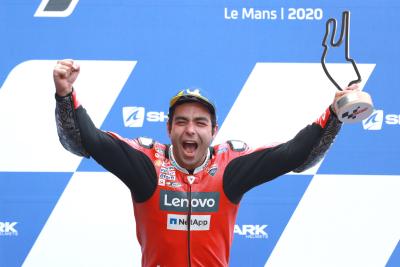
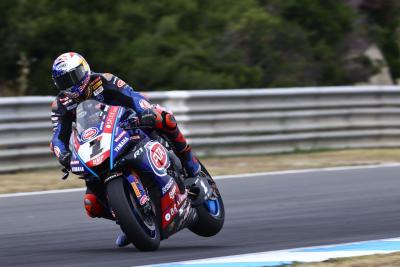
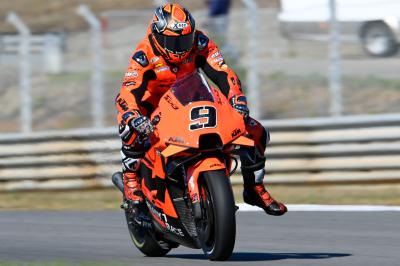
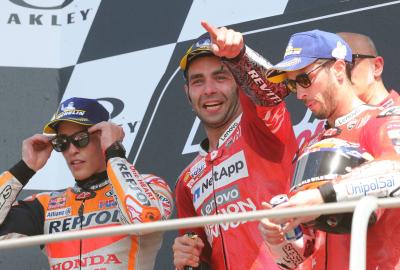
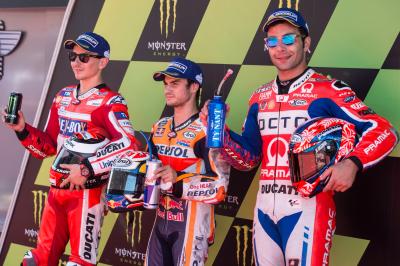
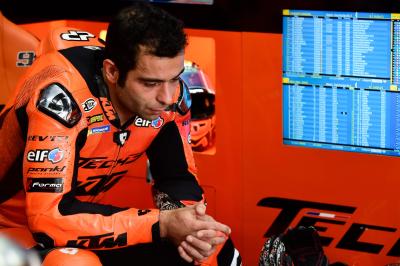
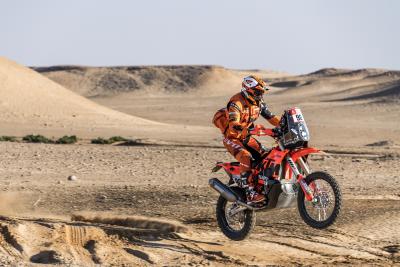
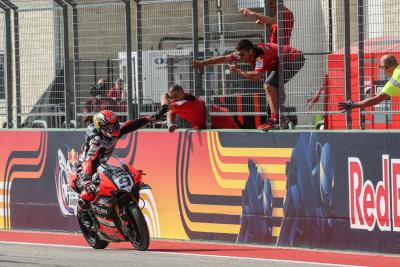


![Johann Zarco, LCR, Honda RC213V, 2024 San Marino MotoGP, Misano, action [Gold & Goose]](https://cdn.crash.net/styles/thumbnail/s3/2024-09/GnG_1166323_HiRes.jpg?itok=vpgrU7Q4)

![Jack Miller, KTM Factory Racing, KTM RC16, San Marino MotoGP, Misano, action [Gold & Goose]](https://cdn.crash.net/styles/thumbnail/s3/2024-09/GnG_1167624_HiRes.jpg?itok=iz7mA4EQ)


![Fabio Quartararo, Monster Energy Yamaha Racing, Yamaha M1, 2024 MotoGP, Misano Test, action [Gold & Goose]](https://cdn.crash.net/styles/thumbnail/s3/2024-09/GnG_1168928_HiRes.jpg?itok=fcYSole_)
![Toprak Razgatlioglu, ROKiT BMW Motorrad, BMW M 1000 RR, Magny-Cours, WorldSBK [Gold & Goose]](https://cdn.crash.net/styles/thumbnail/s3/2024-09/GnG_1165133_HiRes.jpg?itok=GD5SVNVG)

